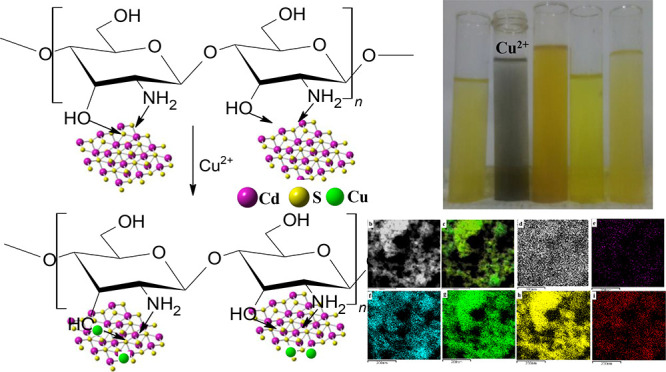- Record: found
- Abstract: found
- Article: found
Chitosan-CdS Quantum Dots Biohybrid for Highly Selective Interaction with Copper(II) Ions

Read this article at
Abstract

Cadmium sulfide (CdS) quantum dots (QDs) were homogeneously embedded into chitosan (CTS), denoted as CdS@CTS, via an in situ hydrothermal method. The intact structure of the synthesized materials was preserved using freeze-drying. The materials were characterized using X-ray diffraction (XRD), X-ray photoelectron spectroscopy, transmission electron microscopy, high-resolution TEM, scanning TEM, dispersive energy X-ray (EDX) for elemental analysis and mapping, Fourier transform infrared spectroscopy, nitrogen adsorption–desorption isotherms, thermogravimetric analysis, UV–vis spectroscopy, and diffuse reflectance spectroscopy (DRS). The synthesis procedure offered CdS QDs of 1–7 nm (average particle size of 3.2 nm). The functional groups of CTS modulate the in situ growth of CdS QDs and prevent the agglomeration of CdS QDs, offering homogenous distribution inside CTS. CdS@CTS QDs can also be used for naked-eye detection of heavy metals with high selectivity toward copper (Cu 2+) ions. The mechanism of interactions between Cu 2+ ions and CdS@CTS QDs were further studied.
Related collections
Most cited references66
- Record: found
- Abstract: found
- Article: not found
Semiconductor nanocrystals as fluorescent biological labels.
- Record: found
- Abstract: not found
- Article: not found
Experimental Determination of the Extinction Coefficient of CdTe, CdSe, and CdS Nanocrystals
- Record: found
- Abstract: found
- Article: not found